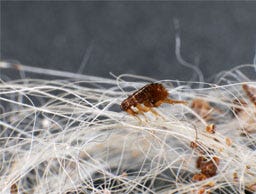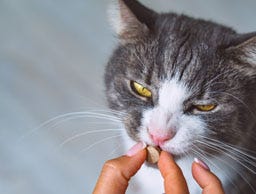Abscesses in Cats: Symptoms, Causes and Treatments
An abscess is a painful collection of pus that can occur anywhere in the body, usually due to a bacterial infection, and can be a common occurrence in cats, especially males, who are known not to shy away from a scrap. Here, we’re going to talk through how to recognise an abscess on your cat and what may have caused it as well as the treatment you may be offered by your vet. It’s important to note that an abscess can be incredibly painful and uncomfortable for your cat and should only ever be treated by a veterinary professional. Minor cuts and scrapes, however, can be treated with appropriate cat first aid.
What Causes Abscesses in Cats?
As we’ve mentioned, abscesses are often caused by a bacterial infection, particularly in cats known to fight with other cats or animals. Cat’s teeth and claws are known to carry a lot of bacteria meaning the bites and scratches that a cat might sustain during a fight can easily become infected when that and other bacteria can get into the wound before it has a chance to heal, trapping the bacteria inside where it can continue to multiply and cause an infection. When an infection is left untreated, the body's natural response is inflammation and to flood the area with white blood cells to try and fight off the infection, which can quickly build up to form pus — a white, yellow or sometimes brown protein-rich fluid — that continues to grow and creating tension beneath the skin and causing inflammation in the surrounding tissue.
Dental Abscesses in Cat
Another type of abscess a cat can suffer is a dental abscess (also called a tooth abscess) which is an inflammatory reaction from a dead or infected tooth. These types of abscesses in cats are commonly caused by a broken tooth as bacteria can then penetrate the soft tissue inside of the tooth (pulp), which then becomes infected and dies. This most commonly occurs in a cat's canines, and while not every broken tooth will lead to an abscess, they will require veterinary treatment.
Symptoms of an Abscess in a Cat
While an abscess can form on any part of your cat’s body, they are most commonly found around the head, neck, legs or the base of the tail.
Depending on where the abscess is and its size, it may be visible to your eye as an obvious, almost bulbous swelling on your cat’s body. If it’s on your cat’s leg or paw, they will likely be limping or holding the paw up when they move. Sometimes, when you press on an abscess, the skin will indent beneath your touch. However, abscesses can be incredibly painful, and your cat likely won’t like you touching the area.
If you can’t find the actual abscess, there may be other signs that your cat is suffering from an infection, and they may not be acting like themselves. This can often be written off as them “licking their wounds”, but you should have them checked by a vet the moment you realise something seems off.
Some other symptoms of an abscess to look out for include the following:
- Excessive itching
- Signs of pain (limping or pawing at the affected area)
- Lethargy
- Loss of appetite
- Drooling
- Swelling
- Visible wounds or blood and pus in their fur
- Fever (particularly with internal abscesses)
- Red, swollen or inflamed skin
- Loss of hair at the abscess site
- Swelling of the face and gums
Abscesses can sometimes rupture either because they’ve grown too large or because your cat has accidentally punctured the abscess. In this case, you will likely notice a thick, yellow discharge from the site that has a foul odour. Please remember, just because the abscess is drained does not mean your cat will recover on their own. The site of the ruptured abscess can still become reinfected and needs to be treated properly by a veterinary professional.

What to Do If You Find an Abscess on Your Cat
If you have noticed any of the above symptoms and think your cat may have an abscess, it’s imperative you contact your vet as soon as possible, even if the abscess appears to have ruptured. If left untreated, an abscess can lead to serious and even fatal conditions like immunodeficiency virus and feline leukaemia virus.
Once your cat is seen by a vet, they will likely be able to tell you if your cat has an abscess as they see them frequently on a range of animals. If they want to confirm if the lump is an abscess, they may pierce the skin with a sterile needle to see if pus comes out. If it does, then it’s almost certainly an abscess.
How to Treat a Cat with an Abscess
Before any kind of medication can be prescribed for your cat, your vet will need to drain the abscess and clean the entire area. This can be incredibly painful and will likely be done under sedation, so you should never attempt to drain your cat’s abscess yourself.
Once drained, the wound can then be left open and cleaned to help promote the healing process and make the wound easier to clean. Your vet may also prescribe antibiotics and painkillers for your cat to help prevent reinfection and also help them recover in comfort. You can also help to keep their wound clean yourself by using a suitable pet wound wash such as the TrizCHLOR Flush.
Can you Prevent Abscesses in Cats?
Whether or not an abscess can be prevented depends on your cat’s temperament. As many abscesses are the direct result of cats fighting, it can be hard to prevent if you intend to keep letting your cat outdoors to explore. That said, you can still take preventative measures such as having male cats neutered and trying to stave off any infections by keeping a cat first aid kit handy and checking your cat every time they come back inside for any signs of injury.
Are you running low on first aid supplies? You can browse our full range of first aid for pets below, or please get in touch with us.
This post is an opinion and should only be used as a guide. You should discuss any change to your pet’s care or lifestyle thoroughly with your vet before starting any program or treatment.














































